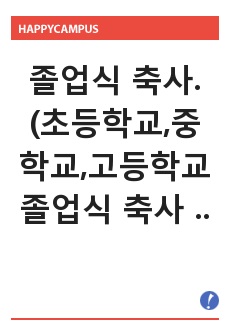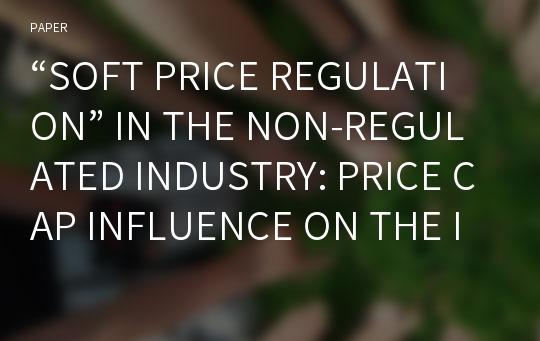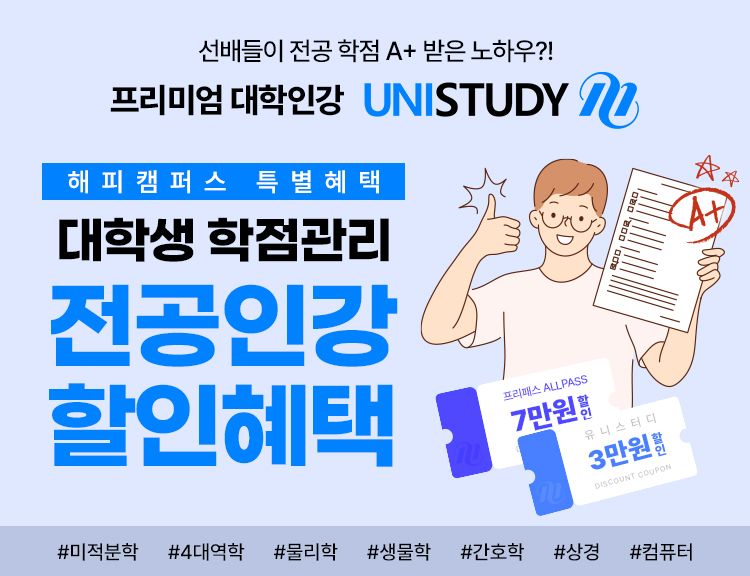“SOFT PRICE REGULATION” IN THE NON-REGULATED INDUSTRY: PRICE CAP INFLUENCE ON THE INCENTIVES TO COLLUDE
* 본 문서는 배포용으로 복사 및 편집이 불가합니다.
서지정보
ㆍ발행기관 : 글로벌지식마케팅경영학회(GFMC)
ㆍ수록지정보 : Global Marketing Conference
ㆍ저자명 : Dina Tsytsulina, Svetlana Avdasheva
ㆍ저자명 : Dina Tsytsulina, Svetlana Avdasheva
영어 초록
Antitrust deals with the competitive consequences of conduct by firms in the market. Marketing places emphasis on understanding how firms compete from individual perspective; by studying the thinking and motivations of managers and purchase preferences of consumers. As an academic discipline marketing aims to describe and predict the performance of companies engaged in exchange to reach organizational goals (Gundlach, Phillips, & Desrochers, 2002). For antitrust, the complementary nature of marketing's constitutes in providing a basis for understanding the nature of competitive conduct and the welfare of consumers. The influence of antitrust on marketing strategy raises many concerns. There is a strand of literature investigating how the antitrust law perceives different marketing activities. Many common marketing practices are coming under greater scrutiny from regulators, antitrust lawyers and scholars. It is essential for companies to understand how that will affect competition. When considering marketing issues such as distribution policy, product line extension, enhancing the company’s positive image, they may not realize the increasing likelihood of violating antitrust laws (Bush & Gelb, 2005). Brodley (1982) analyzes how joint ventures may threaten competition by falsifying competitive incentives among joint venture participants. He describes various incentive-modifying remedies that mitigate anticompetitive risks, and then applies this presumptive approach to various types of joint ventures. Some papers analyze how antimonopoly decisions can influence management of transaction. Joskow (2002) shows the importance of the application of transaction cost economics (TCE) to antitrust legal rules and antitrust remedies specification because it may result in different legal rules comparing to cases ignoring TCE ideas. He emphasizes that antitrust legal rules must be sensitive to the information and analytical capabilities of institutions in the market, the characteristics of potential anticompetitive behavior, market structures etc. Not only the development of marketing practices challenges antitrust enforcement. Antitrust policy can impose significant and long-lasting restrictions on marketing policies of companies, including pricing decisions. One relevant for Russia example is pricing antitrust remedies under the merger deals clearance or investigations on the abuse of dominance. In order to prevent abuse in a form of excessive price antitrust authorities set ‘soft price cap’ on the domestic market price using different benchmarks including quotes in the world commodity markets, price of export contracts, price of export contracts net of transport cost and custom duties, best (lowest) price of export contract etc. This type of remedies is already applied for chemicals, electric steel, cocking coal, aluminum and other commodities. Reform of tariff regulation in Russia takes this path also: from the next year price cap for natural gas for industrial customers will be set at the level of contract price of the largest supplier Gazprom net of transport cost. We argue that this type of remedies being imposed in order to protect customers of dominant company can diminish incentives to compete, along with the restricting incentives for an efficiency-improvement. This paper investigates how soft price regulation affects companies` behavior. In many regulated industries over the world price cap as a method of price regulation replaces cost-plus pricing. It is a kind of incentive regulation introduced in order to enhance productive efficiency by strengthening sellers’ incentives for cost reduction (Laffont, 1993; Cabral & Riordan, 1989) as well as incentives for more efficient pricing. A price-cap regulation might be suggested to address the market by making it extremely difficult for the industry to use price as a marketing strategy and by reducing the available sources the industry has for spending on marketing and lobbying. However pricing under cap is not neutral for competition in the market. We argue that the impact of price cap regulation on market competition depends on the design of cap. More specifically if cap for one (regulated) market depends on the price of the supplier in other (non-regulated) market, there is sub-type of price cap regulation (known in Russian tariff regulation as ‘netback minus’) that enhance incentives to collude in non-regulated market. Traditionally impact of price caps on collusion is analyzed in the framework of focal point problem. Price ceilings might weaken competition serving as collusive focal points for pricing decisions (Schelling, 1960; Scherer & Ross, 1990). According to the Folk Theorem (Tirole, 1988) any individually rational prices can occur as a Nash equilibrium in infinitely repeated games with sufficiently high discount factor. In collusive equilibrium, companies face a coordination problem so that price ceilings may become a focal point on which companies may coordinate. It means that price ceilings may facilitate tacit collusion, increase its stability and lead to higher prices on the market. In addition, price ceilings may become a signal that if firms charge prices below that level than they would not be investigated for collusion by government authorities. Thus, it becomes less risky to maintain collusion at price level that government assess as binding. There is a strand of literature providing the empirical evidence for a collusive focal-point effect of price ceilings in different markets. Knittel and Stango (2003), studying data on state-level price ceilings on credit card charges during the 1980s, find that companies used state-level price ceilings as focal points to sustain tacit collusion. Ma (2007) investigates price ceilings in Taiwan’s flour market and argues that firms set prices above competitive levels during most of the regulation period. Moreover, all flour firms set their prices equal to ceilings. Some studies try to explain the existence of asymmetric retail price adjustments to crude oil price or wholesale price shocks by market power and possible collusion effects (Deltas, 2008; Borenstein, Cameron, & Gilbert, 1997). Sen, Clemente and Jonker (2011) evaluating the effects of price ceiling on retail gasoline prices in Eastern Canada 1999-2007 find the evidence that the enactment of such regulation is significantly correlated with higher prices. A potential explanation is that price ceilings serve as focal points stimulating firms to set higher prices. In contrast, laboratory experiments do not find a collusive focal-point effect of price ceilings. Coursey and Smith (1983) find convergence to the competitive equilibrium prices and no collusive effects of price ceilings in posted-offer markets. Despite in the design of Coursey and Smith (1983) the incentives to collude are small, Engelmann and Normann (2009) also find the evidence against the focal-point hypothesis, who study posted-offer markets with four symmetric sellers but larger incentives for collusion at the price ceiling. Finally, Engelmann and Muller (2011) results again fail to support the focal-point hypothesis. Collusion is as unlikely in markets with a price ceiling as in markets with unconstrained pricing. The possible explanation for different results in the laboratory and in the field is the lack of the focal-point effect in the field. The field results might be driven by other factors. These might include explicit collusion (which might either be triggered by the introduction of the price ceiling or might be easier to keep up in its presence) or other reasons that the empirical studies failed to control for (Engelmann & Muller, 2011). However the design of our research differs from ‘focal point’ approach. It is much closer to the literature on the multimarket contacts (Bernheim & Whinston, 1990; Spagnolo, 1999). Multimarket contacts was also analyzed in the context of multimarket rivalry (Phillips & Mason, 1996) but not from the point of view of cap design as we do. The goal of this paper is to show the mechanism by means of which the establishment of the domestic regulated prices ceiling can promote the stability of collusion and conditions at which it occurs. Intuition of the paper is the following. Under price cap which depends on price in deregulated market deviation from collusion in this market decreases profit in regulated market (in the punishment phase). In the model we think about regulated market as domestic and about completely deregulated market as world market. Under certain conditions the establishment of a price ceiling of domestic market by the principle "price would not excess of the world price" can promote the collusion stability in the world market. We argue that there is an unexpected ratio between the principle of the internal price establishment based on a world indicative and collusion incentives: the difference between the world and internal price to which the regulator aspires is higher, the negative impact of this practice on the competition is higher. Not all the versions of price cap which are based on the world market benchmark provide the same impact on the incentive to collude. Other important variables which reflect transport cost (or more generally all cost of trade). Price cup under model ‘world price plus trade (transport) cost’ provides no impact on the incentives to collude under some level of trade (transport) cost. Price cap under model ‘world price minus trade (transport) cost’ supports the collusion to the greatest extent. This paper represents an interesting focus for the marketing field. The price cap for domestic customer influences companies` incentives to collude in the world markets. Thus, marketing needs to recognize the incentives for cooperative behavior as a strategic marketing tool under soft price cap. Important implication is that pricing remedies imposed on Russian exporting companies will affect prices for the customers of their international competitors.참고 자료
없음"Global Marketing Conference"의 다른 논문
 THE ROLES OF GREEN PACKAGING IN UGLY FOOD PURCHASE INTE..22페이지
THE ROLES OF GREEN PACKAGING IN UGLY FOOD PURCHASE INTE..22페이지 THE IMPACT OF INDUCED AWE ON ETHICAL TOURIST BEHAVIORS5페이지
THE IMPACT OF INDUCED AWE ON ETHICAL TOURIST BEHAVIORS5페이지 A BIBLIOMETRIC ANALYSIS OF SPIRITUAL TOURISM RESEARCH15페이지
A BIBLIOMETRIC ANALYSIS OF SPIRITUAL TOURISM RESEARCH15페이지 SOCIAL NETWORK ANALYSIS AND RESPONSE TIME TESTING: CONS..11페이지
SOCIAL NETWORK ANALYSIS AND RESPONSE TIME TESTING: CONS..11페이지 THE EFFECTS OF PARA-SOCIAL INTERACTION ON ONLINE CELEBR..3페이지
THE EFFECTS OF PARA-SOCIAL INTERACTION ON ONLINE CELEBR..3페이지 THE INFLUENCE OF OPINION LEADERS ON DAILY DEALS USER’S ..3페이지
THE INFLUENCE OF OPINION LEADERS ON DAILY DEALS USER’S ..3페이지 HOW IMMERSIVE RETAILING AFFECTS CONSUMERS’ URGE TO BUY:..6페이지
HOW IMMERSIVE RETAILING AFFECTS CONSUMERS’ URGE TO BUY:..6페이지 KEY TO SUPERSTARDOM IN A GLOBALISED MARKET: THE ROLE OF..6페이지
KEY TO SUPERSTARDOM IN A GLOBALISED MARKET: THE ROLE OF..6페이지 A POST-PANDEMIC LOOK AT TOURISTS’ PERCEIVED COOLNESS OF..4페이지
A POST-PANDEMIC LOOK AT TOURISTS’ PERCEIVED COOLNESS OF..4페이지 EXTRACTING OFFLINE RETAIL SHOPPING PATTERNS: OLLABORATI..5페이지
EXTRACTING OFFLINE RETAIL SHOPPING PATTERNS: OLLABORATI..5페이지

























